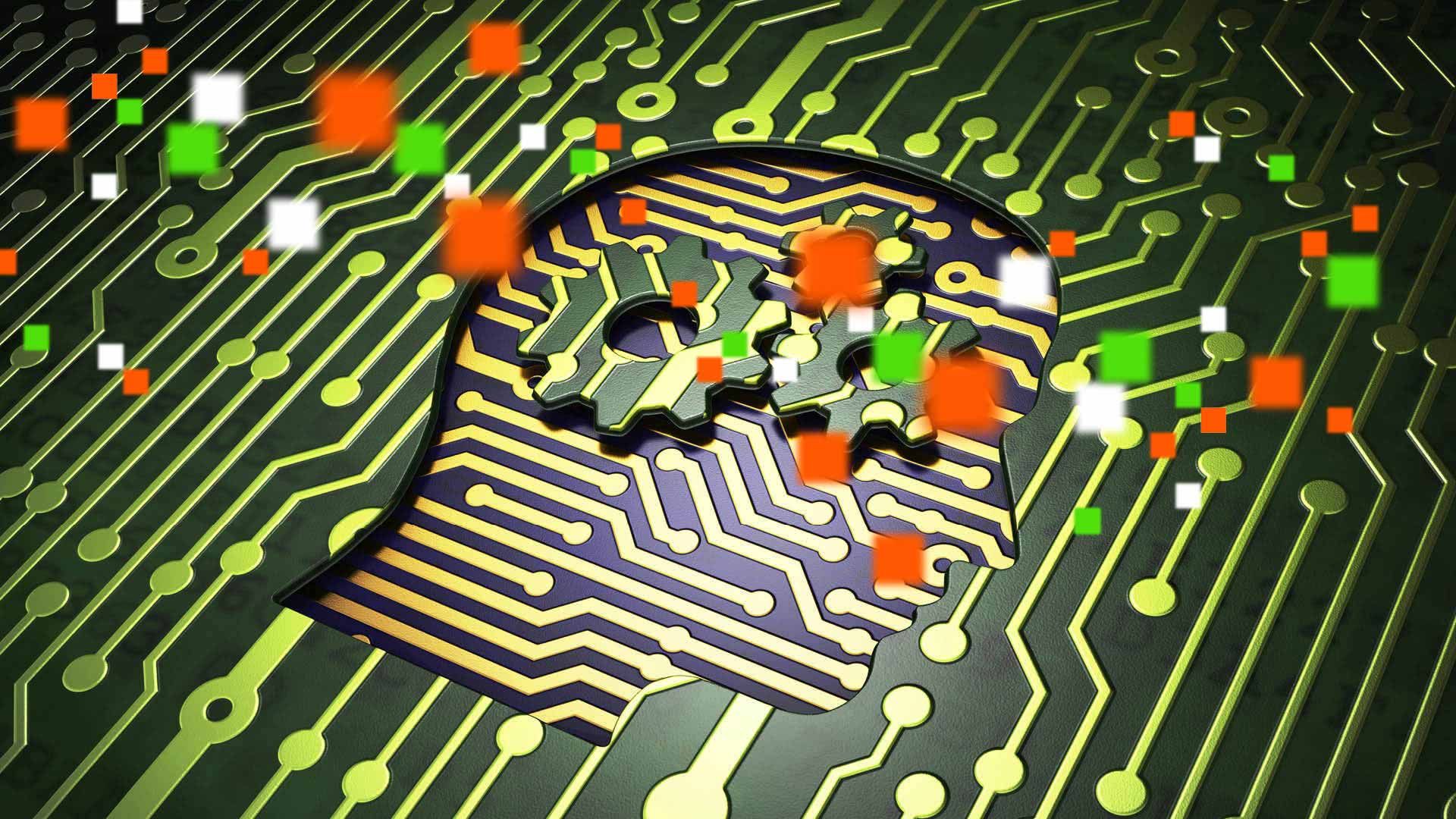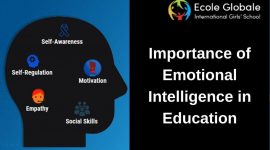Emotional intelligence (EI) is the ability to control and monitor one’s own emotions and to recognize and empathize with others’ emotions. As William Saletan wrote on Slate.com, “Emotional intelligence is an umbrella term for several different abilities that help people succeed in life. It involves the regulation of one’s own emotions and the ability to empathize with others.”
The Role Of Emotional Intelligence In Learning

A. Understanding And Managing Emotions
Emotions have a strong influence on our thoughts, feelings, and behavior. They affect our decisions and how we interact with people in social situations. We can recognize the emotion (or lack of it) in somebody else’s face, voice, or body language because we have these same emotions inside us. Emotions can be positive or negative. Learning to manage our own emotions and understanding others’ feelings help us build stronger relationships.
The Role of Emotional Intelligence in Learning
Emotional intelligence is a concept that has been gaining momentum in the education field as of late. This concept refers to how well we are able to manage our emotions and how they impact our ability to learn. The way that emotional intelligence impacts learning is varied, but it can be broken down into two main categories: self-awareness and social awareness.
Self-awareness refers to how well we can recognize our own emotions and then respond to them appropriately. For example, if you get upset with someone, you might be able to recognize that anger is causing you to act aggressively toward them. However, if your anger goes unchecked, you may lash out at them or become withdrawn from the situation entirely. This can lead to a negative outcome for everyone involved.
Social awareness refers to how well we notice other people’s emotions and respond accordingly. If someone is upset about something but doesn’t tell anyone about it, then their feelings won’t be considered when making decisions about how to proceed with their lives (or their education). In order for students to feel safe expressing themselves at school or at home, they need educators who are willing to listen and help them deal with their problems so that they don’t go unresolved.
C. Improving Academic Performance And Overall Well-Being
The role of emotional intelligence in learning has been linked to improved academic performance and overall well-being. For example, a study by Salovey & Mayer (1990) found that students with high levels of EI were more likely to be successful in school, while another study by Salovey et al., (1995) found that EI was positively related to academic performance.
In addition, studies have shown that high levels of EI can predict feelings of happiness at work and school (Mayer & Salovey, 1997). In other words, individuals with high levels of EI are more likely to experience positive emotions like enthusiasm or enthusiasm for their work. As a result, they may be more likely to perform better than those with lower levels of EI.
Also reads:- CBSE Schools in India
The Benefits Of Emotional Intelligence In The Classroom

A. Enhancing Communication And Collaboration Skills
Emotional intelligence is the ability to perceive and express emotions, distinguish between feelings and label them appropriately; use emotional information to guide thinking and behavior, respond to other’s emotions, and regulate our emotions.
Communication is the process of sharing information in a structured way with the purpose of exchanging ideas. Collaboration is a process of working together to achieve a common goal or produce a product or service. Communication and collaboration are essential tools for successful learning in any environment.
In the classroom, interpersonal skills are critical to the learning process because they allow students to interact with each other effectively and develop meaningful relationships that enhance their learning experiences. These two skills help students connect with their peers, teachers, and parents which allows for more engagement in class discussions, projects, and assignments. They also allow students to work collaboratively on projects so that everyone can benefit from each other’s knowledge and expertise.[1]
B. Promoting Empathy And Understanding Among Students
Emotional intelligence is the ability to identify and manage our own emotions, as well as the ability to recognize and understand others’ emotions. This can be a powerful tool in the classroom, as it allows students to better understand their peers and empathize with them.
Emotional intelligence can be developed through education and practice. Teaching children about their emotions and how they affect those around them helps them learn how to manage their feelings in positive ways. It also gives them an opportunity to practice empathy for others, which carries over into relationships outside of school.
The Impact Of Emotional Intelligence On Teacher Performance
The impact of emotional intelligence on teacher performance Emotional intelligence (EI) is the ability to identify and manage your own emotions, as well as the emotions of others. It is also the ability to use emotional information to guide thinking and behavior. Emotional intelligence includes four main components: self-awareness, managing emotions, motivation, and empathy. Teachers with high EI are better able to cope with stress and burnout, which can lead to better job performance and retention in the teaching profession.
Stress: Teacher stress has been associated with lower job satisfaction and higher turnover rates among teachers. Teachers who reported experiencing a high level of stress were more likely to report plans to leave their current school within a year than those who did not feel as stressed (McNeely & Driscoll, 1997). This may be due in part to the fact that teachers who experience high levels of stress tend to have negative feelings about their jobs or work environments, which may be manifested in their daily interactions with students (McNeely & Driscoll).
Burnout: A study by Larson et al. (2001) found that burnout was positively correlated with emotional exhaustion among teachers working in low socioeconomic areas where there were high levels of crime and poverty; however, job satisfaction
Strategies For Promoting Emotional Intelligence In Education

A. Emotional Intelligence Curriculum And Programs
Emotional intelligence (EI) is defined as the ability to recognize, understand, and manage emotions in ourselves and in others. It involves being aware of and managing our own emotions, as well as recognizing and understanding the emotions of others. EI can help us manage our behavior, navigate social complexities, and build relationships for personal and professional success.
Emotional intelligence is a skill set that can be learned, developed, and improved. There are many ways to teach emotional intelligence in schools, including developing curricula and incorporating emotional intelligence lessons into existing curricula.
B. Social And Emotional Learning (SEL) Activities
Social and emotional learning (SEL) is a scientific approach to promoting positive social and emotional skills in children. It helps students to develop the mental toughness to face life’s challenges, including the ability to manage their emotions, control impulses and make good decisions. SEL is based on neuroscience research showing that these skills are essential for academic success.
SEL programs include social-emotional learning activities that teach students how to manage their emotions better, build healthy relationships, and make wise decisions. These programs can be implemented across all grade levels with a focus on specific age groups: preschoolers (ages 3-6), elementary school children (ages 7-11), middle school children (ages 12-15), and high school students (ages 16-18).
Incorporating Mindfulness And Self-Reflection Practices
Mindfulness is an important aspect of emotional intelligence that can be incorporated into the classroom. By teaching students how to be mindful, educators can help them learn how to better manage their stress, improve their focus and concentration, and enhance their ability to empathize with others. Mindfulness is also a powerful tool for helping students cope with anxiety and depression.
In addition to mindfulness training, there are other self-reflection practices that can be used in the classroom to promote emotional intelligence. For instance, one study found that students who were taught how they could reflect on their feelings and thoughts after they experienced an emotion were better able to manage their emotions than students who were taught only about their emotions (McMillan & Turner, 2008). Another study found that students who were taught how to use self-reflection techniques in conjunction with a mindfulness practice had improved social skills over time compared to students who did not participate in either program (Chen et al., 2010).
Conclusion
At its core, emotional intelligence is about understanding and managing our moods and feelings, both in ourselves and in others. This can be a challenging task at times, but it’s a vital one as well—which is why we have to make sure that young people learn to value and use their emotional intelligence as they grow up. If we’re ever to create a more educated world, one committed to improving standards of living around the globe, we need every student on that journey.









